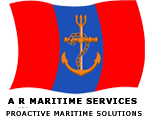Dredging is an excavation activity carried out underwater which involves removing sediments and depositing them at a different location.
It can be carried and is carried out in all kinds of water bodies right from ponds, reservoirs, rivers to seas.
Dredging is carried out to control the effects of erosion and deposition which are continuous phenomenons – for improving navigability and capacity, making waterways navigable, renewing loss of material or land due to erosion.
Dredging is an important activity and a requirement in today’s world:-
1. For creating new harbours and ports
2. For improving and increasing the capacity of older ports and harbours
3. Keeping rivers and inland waters navigable for better connectivity and movement of people and cargo
4. Improving and increasing the capacity of reservoirs and water bodies to hold water and aid in water harvesting
5. For helping keep the water bodies of power plants at required capacities for optimal production of hydroelectricity
6. For flood water management
7. And for cleaning of waterbodies
8. Etc.
Dredging is accordingly of various types, some of the more common types are listed below:-
1. Capital dredging – dredging carried out to create a new harbour, berth or waterway, or to deepen existing facilities in order to allow larger ships access.
2. Preparatory – work and excavation for future construction activities and structures – bridges, piers or docks/wharves, often connected with foundation work.
3. Maintenance – dredging to deepen or maintain navigable waterways or channels which may be threatened by siltation with time because of sedimentation which may make them too shallow.
4. Land reclamation – dredging for sand, clay or rock from the seabed and using it to construct new land structures elsewhere, along with for flood and erosion control.
5. Beach nourishment – mining sand from offshore and placing it on a beach to protect it from erosion and degradation because of action of waves, wind and human activities.
6. Harvesting materials and seabed mining – removing valuable minerals and materials from the bed, and mining of nodules, etc. containing minerals, etc. from the abyssal plains on the ocean floor.
7. Anti-eutrophication – dredging often may be the only remedy for eutrophied (de-oxygenated) water bodies and a requirement for re-generation of underwater flora and fauna.
8. Remedy of contaminated water bodies – safe disposal of contaminated material from areas affected by chemical spills, surges during storms with urban runoff, other soil contamination, removal of trash and debris (non-natural material).etc.
considering the various kinds of dredging activities which are carried out, the equipment or the dredgers to carry out dredging are also of various types, developed as per the requirement and activity, some of the more common types are:-
1.Suction dredger
2. Trailer suction dredger
3. Trailer suction hopper dredger
4. Cutter suction dredgers
5. Bucket dredger
6. Backhoe/ dipper dredger
7. Amphibious dredger
8. Clam shell dredger
At ARMS we have the ability and the expertise to operate, design, maintain and mobilise such dredgers.
